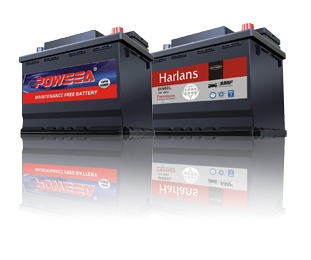Emballement thermique des batteries plomb-acide - Ce que c'est et comment l'arrêter avant qu'il ne soit trop tard
L'emballement thermique : Le tueur silencieux de votre batterie
Si votre batterie au plomb devient chaude pendant la charge et que vous l'ignorez, vous risquez de vous exposer à un échec, au sens propre du terme. L'emballement thermique est l'un des problèmes de batterie les plus dangereux et les moins bien compris. Il peut entraîner la surchauffe, la déformation, voire l'explosion de la batterie dans les cas extrêmes. Le pire ? L'emballement thermique se déclenche souvent sans signes avant-coureurs évidents.

La bonne nouvelle est que l'emballement thermique est 100% évitable si vous en comprenez les causes et prenez des précautions simples. Dans ce guide, nous expliquons l'emballement thermique en termes faciles à comprendre et nous vous montrons comment l'éviter pour de bon.
1. Qu'est-ce que l'emballement thermique ?
Imaginez une boule de neige qui dévale une pente. Au début, elle est petite, mais au fur et à mesure qu'elle roule, elle prend de la neige, grossit et se déplace plus vite. L'emballement thermique fonctionne de la même manière, mais avec de la chaleur au lieu de la neige.
Voici ce qui se passe :
-
La chaleur augmente les réactions de la batterie. Les processus chimiques à l'intérieur de la batterie s'accélèrent.
-
Les réactions plus rapides génèrent plus de chaleur. Cette chaleur ne peut pas s'échapper assez vite.
-
Plus de chaleur = plus de réaction. Ce cycle se poursuit jusqu'à ce que la batterie surchauffe complètement.
Une fois ce cycle enclenché, il est difficile de l'arrêter, d'où l'importance de la prévention.
2. Causes courantes d'emballement thermique (et comment les prévenir)
Beaucoup de gens pensent que l'emballement thermique ne se produit qu'en cas de surcharge, mais la réalité est plus complexe. Voici les causes réelles et ce que vous pouvez faire pour les éviter.
Cause #1 : Surcharge
Si vous chargez votre batterie avec une tension trop élevée ou pendant trop longtemps, elle s'échauffe excessivement.
✔ Comment l'éviter ? Utilisez un chargeur intelligent qui s'arrête automatiquement lorsque la batterie est pleine.
Cause #2 : Mauvaise ventilation
Les batteries plomb-acide dégagent des gaz pendant la charge. Si la chaleur est piégée (en particulier dans les compartiments du moteur), elle accélère le processus d'emballement.
✔ Comment l'éviter ? Chargez toujours votre batterie dans un endroit bien ventilé.
Cause #3 : Température ambiante élevée
Un environnement chaud peut pousser votre batterie au-delà de son seuil de température de sécurité, déclenchant un emballement thermique.
✔ Comment l'éviter ? Évitez d'exposer votre voiture à une chaleur extrême pendant de longues périodes. Si possible, garez-vous à l'ombre.
Cause #4 : courts-circuits internes
Les piles anciennes ou endommagées peuvent développer des courts-circuits internes, ce qui crée une chaleur excessive.
✔ Comment l'éviter ? Inspectez régulièrement votre batterie pour vérifier qu'elle n'est pas gonflée, qu'elle ne fuit pas ou qu'elle n'est pas corrodée.
Cause #5 : Mauvais choix de batterie
Les batteries au plomb ne sont pas toutes conçues pour les mêmes conditions. L'utilisation d'un type de batterie inapproprié pour des environnements à forte chaleur augmente le risque de défaillance.
✔ Comment l'éviter ? Choisissez une batterie adaptée à votre climat et à vos conditions d'utilisation.
3. Mythes courants sur l'emballement thermique
❌ Mythe #1 : Cela n'arrive qu'aux vieilles piles.
🔹 Vérité : Même les batteries neuves peuvent subir un emballement thermique si elles sont mal chargées.
Mythe #2 : C'est juste un petit problème de surchauffe.
🔹 Vérité : L'emballement thermique peut endommager votre batterie de manière permanente, voire provoquer des incendies dans des cas extrêmes.
❌ Mythe #3 : Ce n'est pas un problème pour les batteries au plomb-acide, mais seulement pour les batteries au lithium.
🔹 Vérité : Si les batteries au lithium retiennent davantage l'attention, les batteries au plomb souffrent également d'emballement thermique, en particulier dans les environnements chauds.
FAQ - Réponses rapides aux questions les plus courantes
1. Comment puis-je savoir si ma batterie est en emballement thermique ?
Surveillez l'apparition d'une chaleur excessive, d'un gonflement, d'une forte odeur de soufre ou de bruits de bulles inhabituels pendant la charge.
2. Que dois-je faire si ma batterie surchauffe ?
Arrêtez immédiatement la charge, placez la batterie dans un endroit frais et laissez-la refroidir naturellement. Ne mettez jamais d'eau dessus.
3. L'emballement thermique peut-il se produire en conduisant ?
Oui, mais c'est plus fréquent pendant la charge. Si votre batterie devient extrêmement chaude pendant la conduite, vérifiez la tension de sortie de votre alternateur.
4. Les batteries plomb-acide scellées empêchent-elles l'emballement thermique ?
Ils réduisent le risque mais ne l'éliminent pas. Une charge et une ventilation adéquates sont toujours nécessaires.
5. Dois-je remplacer ma batterie après un emballement thermique ?
Oui. Une batterie qui a subi un emballement thermique est souvent endommagée de façon permanente et son utilisation n'est pas sûre.
Réflexions finales
L'emballement thermique est l'une des menaces les plus sérieuses qui pèsent sur votre batterie plomb-acide, mais avec les bonnes précautions, il est tout à fait possible de l'éviter. En utilisant des techniques de charge appropriées, en maintenant une bonne ventilation et en surveillant l'état de la batterie, vous pouvez faire fonctionner votre batterie en toute sécurité pendant des années.




